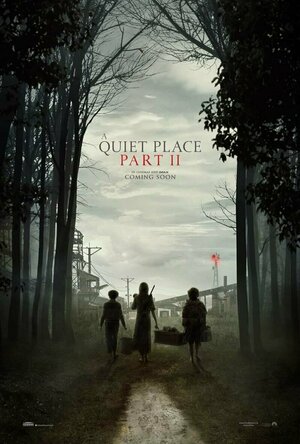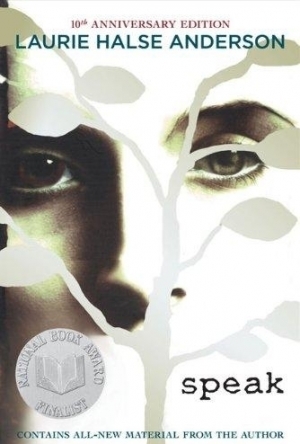Purple Phoenix Games (2266 KP) rated Dungeon Roll in Tabletop Games
Jun 12, 2019
Dungeon Roll is a quick and fun dice-rolling game where Heroes delve into a dungeon to fight monsters (potentially including a dragon!), find treasure, and gain experience points based on how deep into the dungeon they go. If you are playing in a group or solo, the rules of the game are the same – the only difference is how you win! In group play, the winner is the player with the most experience points after 3 rounds of play. In solo play, you are working to get as many experience points as possible – competing against previous plays trying to best yourself!
After a few runs of Dungeon Roll, it has quickly become one of my favorite games to play solo for two main reasons. First, I like and appreciate the simplicity of the rules. It is quick and easy to learn, and the solo variation has no extra rules or stipulations. Simply put, I don’t have to worry about forgetting solo rules because there aren’t any! Don’t have any other players? Great! Just play like you normally would! Yeah, I may have to roll my own Dungeon Dice, but I don’t have to worry about controlling any ghost players or remembering whether or not I need to start the game with a solo handicap. The simplicity and uniformity of the rules, regardless of player count, means that I don’t have to spend time re-reading the rulebook to refresh my memory on solo play, and can just get down to playing instead!
The next reason why I love to play Dungeon Roll solo is due to the variability and unpredictability of the game. The base game comes with 8 Hero cards, each with unique abilities, and the expansion packs provide even more Hero choices. Different heroes/abilities lend themselves to different strategies for success – there is not one right way to play. Even if you pick to play as the same Hero every game, though, the dice rolling mechanism makes sure that no two games are ever alike. Dice rolling can be a fickle friend, and oftentimes the success (or failure) of a round depends solely on the luck of the roll. I, unfortunately, am a notoriously bad dice-roller…. BUT that helps make this game more interesting for me because it forces me to really strategize how I am going to use my Hero abilities, treasure tokens, and dice to my benefit. Sometimes it works out well and I come out with a respectable score! But then again, sometimes it’s the exact opposite and I come out wondering whether or not I should even log the play with as feeble a score as I got… Either way, dice rolling is unpredictable and that (along with different Hero abilities and treasure tokens) makes for a unique game every time.
Dungeon Roll is a fun and competitive game for both groups and the solo player. This game is deceptively simple and wildly entertaining, and I highly recommend adding it to your solo arsenal!
https://purplephoenixgames.wordpress.com/2018/12/21/solo-chronicles-dungeon-roll/

Empire magazine: movie news, interviews & reviews
Magazines & Newspapers
App
Looking for World-Class Movie Coverage? Empire on the iPad is a smorgasbord of A-list stars...
Cardlists Label Printing
Utilities and Productivity
App
Easily print address labels for Christmas cards or other mailing lists. Easy list management. This...
Bob Mann (459 KP) rated A Quiet Place: Part II (2021) in Movies
May 29, 2021
In a pre-title sequence, we return to “Day 1” of the events of the first movie to see how life in the Abbott’s home town changed forever when chaos reigned down from the skies.
Rolling forward 473 days later, the plot picks up on the life of Evelyn (Emily Blunt), Regan (Millicent Simmons) and Marcus (Noah Jupe), following the dramatic events of “A Quiet Place” and the death of husband/father Lee (John Kravinski).
The three, together with Evelyn’s newborn, set off on a perilous journey to find help.
Positives:
- Sequels often try to over-reach, lobbing-in over-the-top action and forgetting why the audience so loved the original hit. This sequel doesn't fall into that trap, continuing the story in a seamless way. We very quickly get reinvested in the character's dire situation (as their situation suddenly gets even more dire!).
- The pre-title sequence is perfectly paced and utterly thrilling. It's the sequence that most grabbed my attention so many months (years?!) ago when - pre-Covid - I first saw the trailer attached below. That bus!!
- The ensemble cast works well together. Cillian Murphy is a fine actor, filling the Krasinski-shaped hole. And Emily Blunt is as kick-ass and wonderful as always. But special 'attaboys' need to go to the two youngsters, Millicent Simmonds and Noah Jupe. They were impressive in the first movie but here have to carry even more of the dramatic action and are just brilliant.
- Technically, the film has Oscar-worthy strengths.
-- The editing here is first rate: many of the jump scares are well-signposted, but they still work thanks to the timing of the cuts.
-- The sound design is (as you would expect) fantastic: once again this is a movie where snacks should be banned!
-- The soundtrack, by Marco Beltrami, is great, building on his themes from the original but knowing when to shut-up as well!
Negatives:
- It's a genuine joy to see John Krasinski in the dramatic pre-title sequence reprising his role of Lee Abbott. But then his massive presence is missed for the rest of the movie. Perhaps killing him off at the end of part 1 wasn't such a good idea?
- There's a lot of 'grief and mourning' to contend with here, post- (or nearly post-) Covid. This didn't affect me. But the illustrious Mrs Movie Man was 'not mentally ready' for it, and actively disliked the film as a result.
Summary Thoughts on "A Quiet Place Part II": Often a sequel doesn't live up to my expectations. Particularly so when I've loved the original AND had to wait SOOOOOOoooooooo long to see it. But this time I was not disappointed. I gave the original 5 stars. This naturally lacks the originality of the premise and is - imho - less good. But not by a great margin. It's still a rollercoaster thrill-ride that - at 97 minutes - doesn't overstay its welcome. Sometimes 'more of the same' is enough.
This is also a great movie to get people back into cinemas. Because, ladies and gents, since this is a MUST SEE on the big screen, and ideally in a screen with a great sound system.
As long as Krasinski stays at the helm, I'll personally be looking forwards to AQP - Part III, which I understand is in the works.
(For the full graphical review, please check out One Mann's Movies on t'interweb or Facebook. Thanks.)

MoneyWiz 2 - Personal Finance
Finance and Business
App
Simplify your financial life with MoneyWiz. Have all your accounts, budgets and bills in one place!...

Pink Noise
Lifestyle and Health & Fitness
App
THE BEST APP DEDICATED SPECIFICALLY TO PINK NOISE! Finally there is an app made solely for Pink...

Proud
Productivity
App Watch
Take back control over your time, productivity and success with Proud. It's a big challenge...
productivity

Scanner for Fax & QR Codes
Utilities and Productivity
App
Scanbot is the best mobile scanner app for documents and QR codes. Create free, high-quality PDF or...
I feel for Melinda, but it took most of the book to get to that stage. It was difficult to read through her eyes because it's mostly about the teachers and kids shunning her because she called the police and broke up a party and wanting to just be isolated. Her parents are just something else entirely.
"I'm getting better at smiling when people expect it."
When it seems like she may have a new friend in a new student named Heather, she goes and ditches Melinda to be a part of a group called The Marthas. That actually kind of hit close to home for me, because I've had someone do that to me. The sad thing is, Heather comes CRAWLING back to Melinda because she's overwhelmed and hates being a part of the group and needs Melinda's help with decorating. And Melinda, rightfully, tells her she can't help her.
She doesn't tell her the truth - which would be because you totally ditched her, told her you couldn't be around her because of her 'reputation' and just left her there, yeah, no. She just makes up some excuse about a tree being taken out of her yard. Well, either way, I was kind of proud of her for not giving in to helping her. Go away, Heather!
Like I said, it took me nearly half of to almost the end of the book to really get a feel for Melinda. When she does realize (from shows like Oprah and Sally Jessy) that she was raped, she tells one girl who USED TO BE her friend. Rachel/Rachelle pines over the guy who was known as IT for most of the book, but real name Andy, and she's called a liar.
"IT happened. There is no avoiding it, no forgetting. No running away, or flying, or burying, or hiding."
Of course she's called that. I kept thinking I wouldn't tell her. As sad as that sounds, I wouldn't have told her the truth. Because, she wouldn't believe her ex friend no matter if it is the truth or not.
While it took me nearly the whole book to feel for Melinda or want to finish the story, I'm glad I did. This still happens. I'm not saying it's only women who are raped, but those that suffer through this trauma can't seem to speak up. And when they do, it's not always well received. Why is it difficult when someone says they went through this kind of experience? Why is it judged so harshly? And why is it such a taboo subject?
"Censorship is the child of fear and the father of ignorance."
I would also like to point out the one time I think Rachel/Rachelle said it right when it came to looking for symbolism in classic books.
"How do you know what he meant to say? I mean, did he leave another book called "Symbolism in My Books?" If he didn't, then you could just be making all of this up. Does anyone really think this guy sat down and stuck all kinds of hidden meanings into his story? It's just a story.... But I think you are making all of this symbolism stuff up. I don't believe any of it."
Sorry, I'm quoting the book a lot. I'm sorry but I do agree that I think most of the classical authors weren't thinking much about symbolism when they wrote their books. Just saying.
I do believe everybody should read this book once in their lives. Censorship is a crock. Books like this and To Kill A Mockingbird are important novels that kids should read. Banning books is about as redundant as baker's chocolate.




